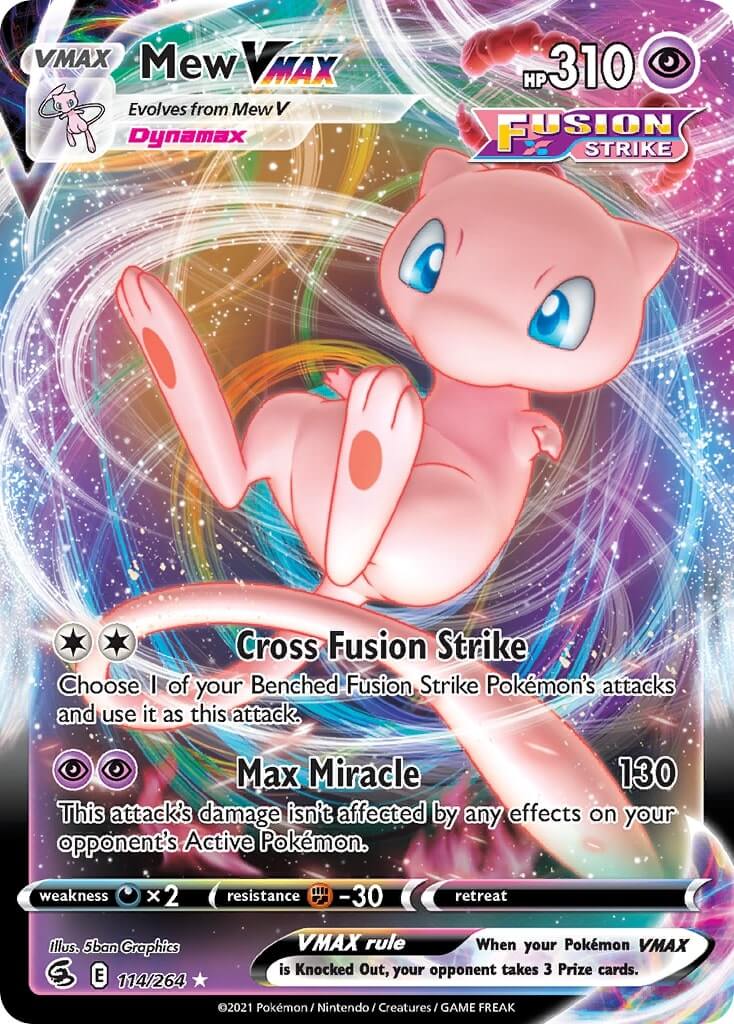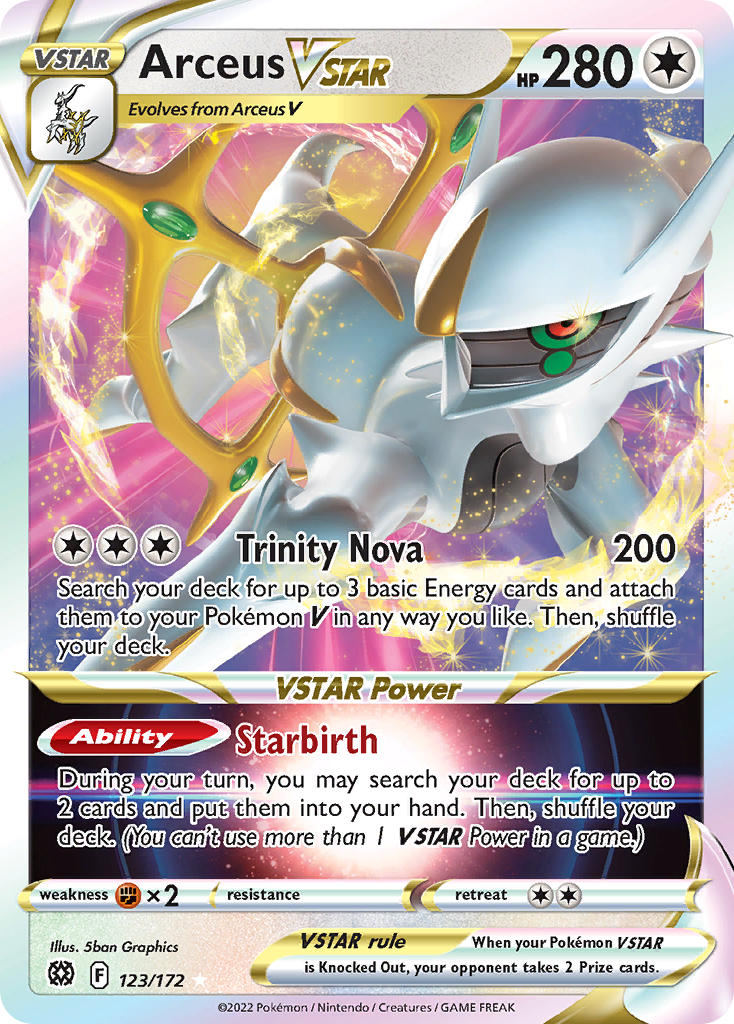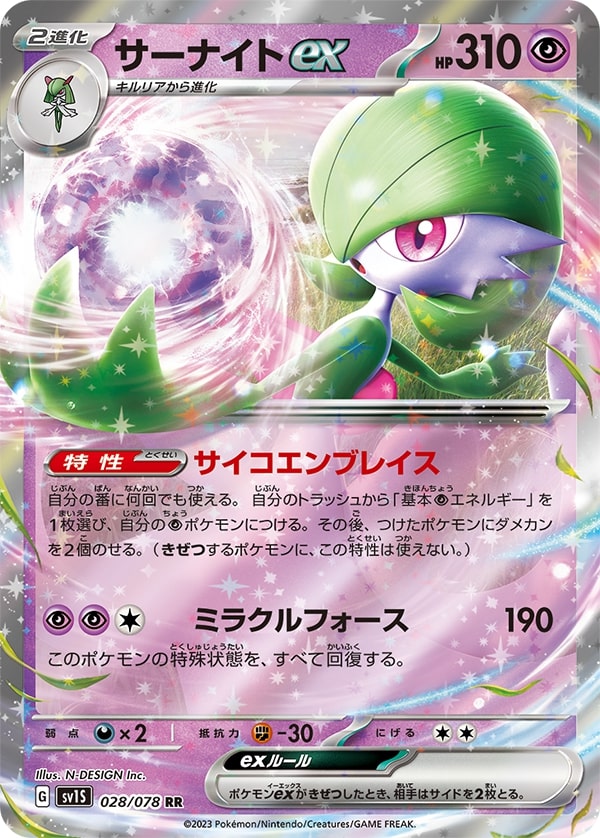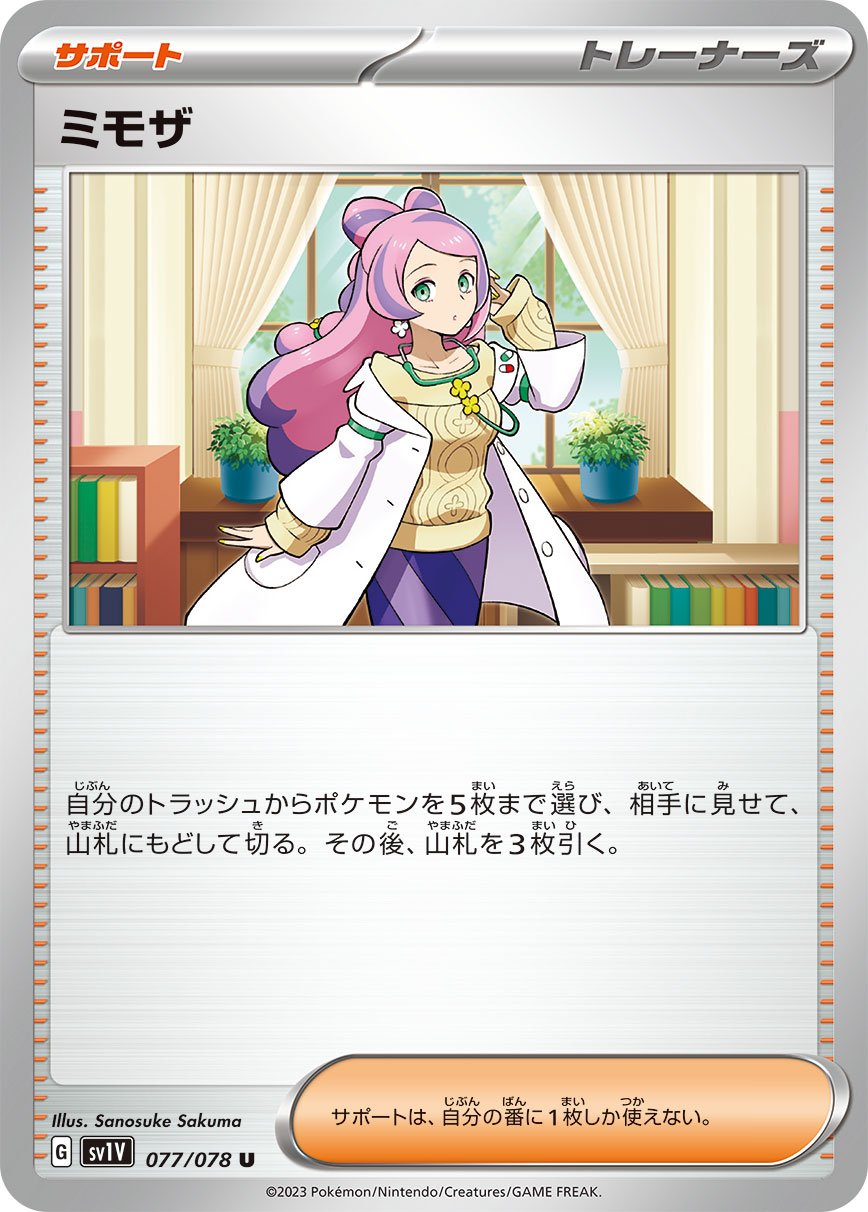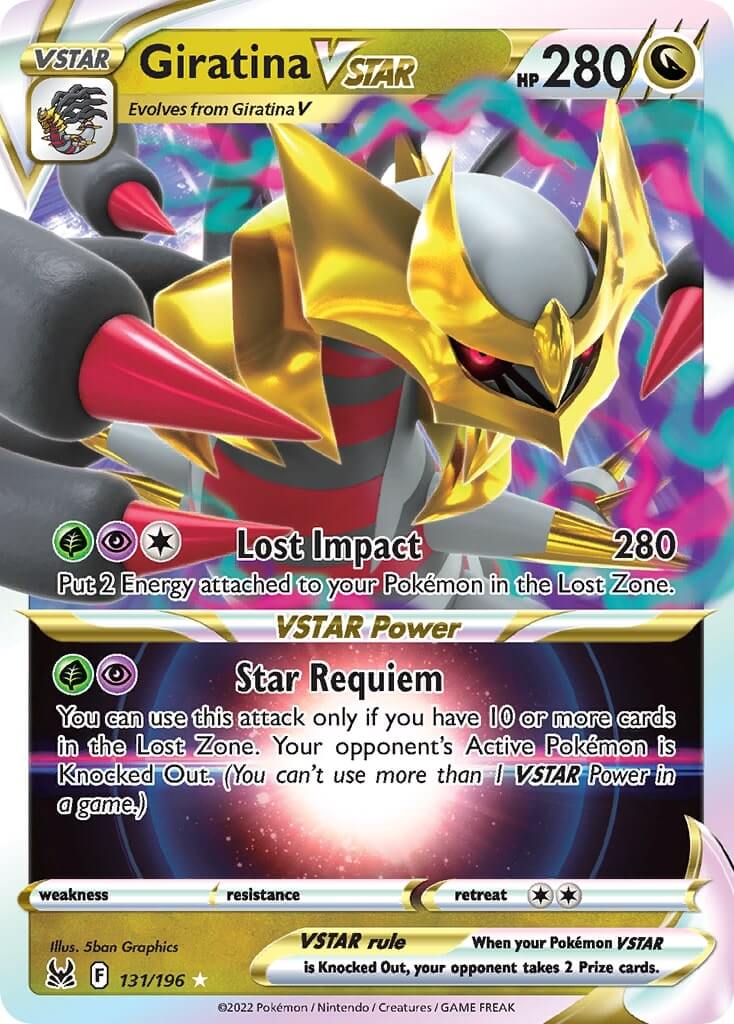Welcome back! The first set of the Scarlet & Violet era releases in less than a month, and it will become legal two weeks later, on April 14th, the same day that rotation hits and, not coincidentally, the first day of the European International Championships. From a competitive player’s perspective, there’s still some time and tournaments before we get there. However, a mid-season rotation is a big event and it’s worth preparing in advance. And if you’re not planning to go to any major events before April, you might already be testing this new format!
That’s why I think now is a good time to look at how the format will evolve with rotation and the release of Scarlet & Violet. I’ll go over the most important decks of the current (Sword & Shield to Crown Zenith) Standard format and how they’ll change with rotation, and talk about a couple of new archetypes that will appear in this new era. I’ll give decklists for these decks, but keep in mind that these are only examples to get you started; each of the decks I’ll cover can be built in many different ways and I can’t mention every tech in this article.
The basics
Let’s start with the beginning. On April 14th, all cards with the regulation letter D (that haven’t been reprinted since then) will rotate out of Standard. That corresponds approximatively to the sets before Battle Styles. Cards that are lost to rotation include staples such as Quick Ball, Marnie, Evolution Incense, Drizzile and Scoop Up Net, archetype-defining Pokémon such as Vikavolt V, Eternatus VMAX, and Galarian Weezing, cards that are core to some current deck like Powerful Energy, Amazing Rayquaza, Twin Energy and Snorlax VIV, and powerful techs such as Big Parasol, Galarian Zigzagoon, and Wash Energy.
A common question when rotation hits is “what can I play to replace this card in my deck?”. I think this is usually misguided. First of all, this isn’t always possible. There’s no replacement for Metal Saucer in a Dialga VSTAR deck; if you want to play Dialga VSTAR, you’ll need, at the very least, a complete change to the engine (maybe using Raihan and Mirage Gate as Energy acceleration). And even when there are replacements to a card, it can be short-sighted to only try to change a deck by replacing a card with another, without considering the wider implications of that change, in that deck and in its matchups.
For example, in most decks, Quick Ball can be replaced by Nest Ball (which is reprinted in Scarlet & Violet). However, while similar, these cards are not the same. For example, you can’t use Nest Ball to search for Lumineon V to use its Ability. So, in a Lost Zone engine, for example, if you replace your Quick Ball with Nest Ball, it makes no sense to run Lumineon V. Now you need to either play Ultra Ball to search for Lumineon V, or play without it. In this case, it might be worth running Pokégear to have more outs to the all-important Colress’s Experiment, and so on. A single change has ripple effects. Similarly, without Quick Ball, if you want to run Hawlucha as a replacement for Galarian Zigzagoon, you might need to play some Level Ball.
With that in mind, let’s look at each of the current top decks to have an idea of how it will change.
Lugia VSTAR deck
The best deck of the current format takes a big hit with rotation. Powerful Energy, Aurora Energy, and Capture Energy all rotate. This means that Lugia VSTAR can’t threaten KOs on other VSTAR Pokémon anymore, that it can’t power up any attacker like before (Yveltal and Raikou rotate as well anyway), and that its consistency takes a hit. For a while, it seemed like Lugia’s days were over. However, it turns out that there are still powerful Special Energy in the format, and Lugia found a way to stay competitive, with a lot of adjustments. In Japan, Lugia has been reimagined as a Single Strike deck: Archeops can accelerate Single Strike Energy to attackers such as Tyranitar V and Stonjourner, which hit various relevant Pokémon for Weakness (Mew VMAX, Gardevoir ex and Miraidon ex, among others). With Urn of Vitality, these Energy cards can be shuffled back in the deck, so they can be used all game long.
That said, Lugia’s consistency remains an issue as Quick Ball and Evolution Incense leave the format, requiring the deck to use less reliable methods of finding its Pokémon, such as Capturing Aroma.
Example decklist:
| Pokémon – 20 |
|---|
| 4 Lugia V SIT 138 |
| 4 Lugia VSTAR SIT 139 |
| 4 Archeops SIT 147 |
| 2 Tyranitar V BST 97 |
| 2 Stonjourner BST 84 |
| 2 Lumineon V BRS 40 |
| 1 Drapion V LOR 118 |
| 1 Pumpkaboo EVS 76 |
| Trainer Cards – 27 |
|---|
| 4 Professor’s Research BRS 147 |
| 2 Judge FST 235 |
| 2 Boss’s Orders BRS 132 |
| 2 Serena SIT 164 |
| 1 Professor Burnet PR-SW 167 |
| 4 Ultra Ball CRZ 146 |
| 4 Capturing Aroma SIT 153 |
| 3 Urn of Vitality BST 139 |
| 2 Nest Ball SUM 123 |
| 2 Mesagoza |
| 1 Collapsed Stadium BRS 137 |
| Energy – 13 |
|---|
| 4 Single Strike Energy BST 141 |
| 3 Lucky Energy CRE 158 |
| 2 Double Turbo Energy BRS 151 |
| 2 V Guard Energy SIT 169 |
| 2 Gift Energy LOR 171 |
Mew VMAX deck
Most of Mew VMAX‘s cards come from recent sets, and as such, the deck changes little after rotation. The main card being lost is Quick Ball, which served both as added consistency and as a way to discard unwanted cards in order to draw more with Genesect V. This loss is not trivial, but it’s not enough either to stop Mew from being a powerful competitor.
Both the pure Double Turbo Energy build and the Elesa’s Sparkle build of the deck can be played. However, there’s now an additional reason to play Elesa’s Sparkle: the release of Klefki in Scarlet & Violet. Klefki’s Ability removes the Abilities of all other Basic Pokémon in play while it’s Active. This can shut down Mew pretty hard as it means it can’t rely on the draw power of Fusion Strike System. However, if Genesect V has a Fusion Strike Energy attached, it will be immune to the opponent’s Pokémon’s Abilities, including Klefki’s.
The list featured below is heavily based on a list that made top 4 at the recent Champions League in Aichi. It plays both Fusion Strike Energy an a disruption package in the space that was once used by Quick Ball.
Example decklist:
| Pokémon – 12 |
|---|
| 4 Mew V CRZ 60 |
| 3 Mew VMAX FST 114 |
| 4 Genesect V FST 185 |
| 1 Meloetta FST 124 |
| Trainer Cards – 41 |
|---|
| 2 Elesa’s Sparkle FST 233 |
| 3 Boss’s Orders BRS 132 |
| 1 Judge FST 235 |
| 1 Roxanne ASR 150 |
| 4 Power Tablet FST 236 |
| 4 Battle VIP Pass FST 225 |
| 4 Ultra Ball CRZ 146 |
| 4 Cram-o-matic FST 229 |
| 4 Lost Vacuum CRZ 135 |
| 2 Switch Cart ASR 154 |
| 1 Escape Rope BST 125 |
| 1 Nest Ball SUM 123 |
| 1 Feather Ball ASR 141 |
| 1 Pal Pad SSH 172 |
| 1 Echoing Horn CRE 136 |
| 2 Choice Belt BRS 135 |
| 2 Forest Seal Stone SIT 156 |
| 3 Path to the Peak CRE 148 |
| Energy – 7 |
|---|
| 4 Fusion Strike Energy FST 244 |
| 3 Double Turbo Energy BRS 151 |
Lost Zone Box
Lost Zone decks lose Scoop Up Net, a key part of their strategy. Without it, your potential for using Comfey’s Flower Selecting many times per turn is limited to once per Comfey. They do gain the Beach Court Stadium card which give them an easier way to retreat Comfey, though.
While the potential for explosive turns from Lost Zone decks has been neutered, there are some good news too. First of all, without Scoop Up Net, damage tends to stick in play longer, which makes Sableye even more of a threat. If you hit a Radiant Greninja for 110 damage with Cramorant, that damage will stay in play, and you’ll be able to use Lost Mine to finish off that Greninja along with another Pokémon later. The other good news for Lost Zone Toolbox is that some of its most hated cards disappear with rotation: Vikavolt V rotates, and Stoutland V becomes irrelevant without Powerful Energy.
When all is said and done, Lost Zone Toolbox will probably remain a powerful archetype with, just like now, can be played in various ways: Sableye / Charizard, Kyogre, Sky Seal Stone with Drapion V and Raikou V, etc.
In fact, Lost Zone Toolbox actually won the 3000-player Champions League in Japan, and here’s the decklist that ended up winning:
| Pokémon – 13 |
|---|
| 4 Comfey LOR 79 |
| 2 Sableye LOR 70 |
| 1 Cramorant LOR 50 |
| 1 Radiant Greninja ASR 46 |
| 1 Snorlax LOR 143 |
| 1 Zamazenta CRZ 97 |
| 1 Raikou V BRS 48 |
| 1 Drapion V LOR 118 |
| 1 Manaphy BRS 41 |
| Trainer Cards – 36 |
|---|
| 4 Colress’s Experiment LOR 155 |
| 2 Raihan CRZ 140 |
| 2 Klara CRE 145 |
| 1 Boss’s Orders BRS 132 |
| 4 Mirage Gate LOR 163 |
| 4 Battle VIP Pass FST 225 |
| 4 Switch Cart ASR 154 |
| 4 Escape Rope BST 125 |
| 3 Nest Ball SUM 123 |
| 2 Energy Recycler BST 124 |
| 1 Hisuian Heavy Ball ASR 146 |
| 1 Lost Vacuum CRZ 135 |
| 1 Echoing Horn CRE 136 |
| 1 Sky Seal Stone CRZ 143 |
| 2 Beach Court |
| Energy – 11 |
|---|
| 4 Water Energy |
| 3 Psychic Energy |
| 3 Metal Energy |
| 1 Lightning Energy |
Regigigas deck
While Regigigas and all its Regi brethren is still in the format, all the Special Energy it plays, minus Gift Energy, rotates out of Standard. This includes the most important one of all, Aurora Energy, without which it’s impossible to power up your attackers (except Regigigas). Regigigas is now only playable with Basic Energy, and that version is much less consistent due to needing to find the right Energy at the right time (instead of Aurora Energy powering up any of your attackers). Also, without Ordinary Rod, you can’t recover your Pokémon without playing a Supporter.
Basically, if you’re a Regigigas player… I recommend you find another deck to play. Regigigas will need a lot of support before it can become competitive again!
Goodra VSTAR deck
Just like Regigigas, Goodra VSTAR is still playable. In fact, it doesn’t even lose any key card to rotation!
However, I think it will become much less viable, due to how the rest of the metagame will evolve. Some of Goodra VSTAR’s best matchups are Regigigas and Vikavolt, both of which become irrelevant upon rotation. Lost Zone Toolbox is a deck that Goodra is usually happy to face, but without Scoop Up Net, the matchup becomes worse, both because it’s now harder to use Mirage Gate, and because one way to win against Lost Zone Toolbox is to remove your weaker Pokémon from play at the end of the game in order to deny the opponent easy Prizes. Without Scoop Up Net, you can’t do that, which allows Sableye to close out the game.
It’s also worth noting that Giratina VSTAR is relevant again after rotation (more on that later), and Goodra VSTAR matches poorly against it.
All in all, while Goodra can still be played, there’s no real reason to do so compared to other decks, in my opinion.
Arceus / Duraludon deck
Finally, let’s talk about Arceus / Duraludon, my favorite deck for newcomers! This deck actually loses almost nothing to rotation: Quick Ball can be happily replaced with Nest Ball, and you’ll have to play the Single Strike Duraludon V instead of the Metal one, but that’s not really an issue. The one important card that rotates is Hyper Potion, which means that Duraludon VMAX can’t heal itself anymore (unless you’re willing to play something strange like Cheryl, or the weak Crystal Cave).
Despite that, Arceus / Duraludon hasn’t had too much success in Japan. I think one of the main reasons is how powerful Giratina VSTAR has been there. With no Big Parasol in post-rotation Standard, it’s impossible for Duraludon VMAX to deal with Star Requiem. That said, there are still arguments for playing it: if nothing else, it’s a strong counter to Lugia VSTAR (most lists can’t touch it at all!).
Without Hyper Potion, Colress’s Experiment (mostly used to find the Double Turbo Energy + Hyper Potion combination) becomes worse, and there’s no need to play four Boss’s Orders since we don’t need to target Archeops anymore in the Lugia matchup, so the deck can move closer to the kind of list that was played prior to Lost Origin’s release.
Example decklist:
| Pokémon – 12 |
|---|
| 4 Arceus V BRS 122 |
| 3 Arceus VSTAR BRS 123 |
| 2 Duraludon V EVS 122 |
| 3 Duraludon VMAX EVS 123 |
| Trainer Cards – 35 |
|---|
| 2 Pokégear3.0 HS 096 |
| 1 Echoing Horn CRE 136 |
| 3 Boss’s Orders RCL 154 |
| 2 Switch SUM 132 |
| 3 Nest Ball SUM 123 |
| 2 Judge FST 235 |
| 3 Professor’s Research SHF 060 |
| 4 Ultra Ball BRS 150 |
| 1 Single Strike Style Mustard BST 134 |
| 1 Choice Belt BRS 135 |
| 3 Serena SIT 164 |
| 2 Karen’s Conviction CRE 144 |
| 4 Trekking Shoes ASR 156 |
| 4 Tower of Darkness BST 137 |
| Energy – 13 |
|---|
| 3 Fighting Energy |
| 4 Double Turbo Energy BRS 151 |
| 6 Metal Energy |
New archetypes
Maybe, instead of playing the same deck as before, but updated with rotation, you’d like to play a new archetype? Good news, there are several powerful cards in Scarlet & Violet you can build a deck around! I’ll mention the two main ones from a competitive standpoint.
The first one is Miraidon ex, a fast, Basic-led archetype that can hit for massive damage, especially when boosted by Regieleki VMAX. With two Regieleki VMAX in play, it can KO any Pokémon VSTAR, and even a Mew VMAX with a third Regieleki VMAX. Setting up these Pokémon isn’t too hard thanks to Tandem Unit, and powering them up is easy thanks to the powerful Electricity Generator.
While you can play many Lightning-type attackers in this deck, including Raikou V, Flying Pikachu VMAX, and Raikou V, I’ve opted for a simple version of the deck here. Klefki is added to the deck in order to improve the matchup against Lost Zone decks: you can take a KO on Comfey or Cramorant with Regieleki V’s Switching Bolt and put Klefki Active, shutting down Comfey’s Ability.
Example decklist:
| Pokémon – 14 |
|---|
| 3 Miraidon ex |
| 4 Regieleki V SIT 57 |
| 4 Regieleki VMAX SIT 58 |
| 2 Klefki |
| 1 Radiant Greninja ASR 46 |
| Trainer Cards – 32 |
|---|
| 4 Professor’s Research |
| 2 Judge |
| 2 Serena |
| 2 Boss’s Orders |
| 2 Arven |
| 4 Nest Ball |
| 3 Ultra Ball |
| 4 Electricity Generator |
| 2 Switch Cart |
| 2 Forest Seal Stone |
| 1 Exp Share |
| 1 Choice Belt |
| 3 Beach Court |
| Energy – 14 |
|---|
| 14 Lightning Energy |
Fancy something a bit more unique? Gardevoir ex marks the return of relevant stage 2 attackers to the metagame! It took a stage 1 with Trade, another one with the equivalent of Frogadier’s Water Duplicates, one of the best form of Energy acceleration we’ve ever seen, multiple Pokémon that benefit from it, and great Psychic-type support in the form of Fog Crystal, but it seems like stage 2 attackers are a thing again.
The deck uses Gardevoir ex to attach Energy to multiple attackers, including itself (190 damage is not that much, but it deals well with smaller Pokémon), and Gardevoir CRE, to deal with other Pokémon. The deck can include many tricks thanks to its powerful draw engine, including Zacian V with Sky Seal Stone to take additional Prizes, Emergency Jelly and Cresselia to heal or reflect back to the opponent damage dealt by Sableye or by Gardevoir ex’s own Ability, and Temple of Sinnoh to help against Lugia VSTAR.
Gardevoir ex can be teched in many different ways, but here’s a decklist to get you started, inspired by the one that got second place at the Aichi Champions League.
Example decklist:
| Pokémon – 18 |
|---|
| 4 Ralts ASR 60 |
| 3 Kirlia SIT 68 |
| 1 Kirlia CRE 60 |
| 2 Gardevoir CRE 61 |
| 2 Gardevoir ex |
| 1 Gallade ASR 62 |
| 1 Zacian V CEL 16 |
| 1 Cresselia LOR 74 |
| 1 Mew CEL 11 |
| 1 Manaphy BRS 41 |
| 1 Radiant Greninja ASR 46 |
| Trainer Cards – 31 |
|---|
| 2 Judge FST 235 |
| 1 Professor’s Research BRS 147 |
| 1 Roxanne ASR 150 |
| 1 Boss’s Orders BRS 132 |
| 1 Worker SIT 167 |
| 1 Arven |
| 1 Klara CRE 145 |
| 1 Miriam |
| 4 Battle VIP Pass FST 25 |
| 4 Level Ball BST 129 |
| 4 Fog Crystal CRE 140 |
| 2 Rare Candy CRZ 141 |
| 2 Ultra Ball CRZ 146 |
| 1 Pal Pad SSH 172 |
| 2 Emergency Jelly SIT 155 |
| 1 Sky Seal Stone CRZ 143 |
| 2 Temple of Sinnoh ASR 155 |
| Energy – 11 |
|---|
| 11 Psychic Energy |
Returning decks
Finally, as I alluded to, there’s an important deck that has seen very little success in the current Standard format, but that can be expected to explode in popularity after rotation hits: Giratina VSTAR. Once considered one of the best decks prior to Silver Tempest’s release, Giratina took a big hit once Lugia was released and starting dominating tournaments, as it matched up poorly against it. After rotation, though, Lugia VSTAR loses most of the cards it used to assert dominance over Giratina VSTAR (Powerful Energy and Amazing Yveltal), so Giratina works well again. In addition, there’s no Big Parasol to counter Star Requiem anymore, and Giratina V’s Abyss Seeking becomes particularly relevant as the format slows down (especially since it can be used to draw cards and send cards to the Lost Zone even against a Klefki). All the things that made Giratina VSTAR a top tier deck in the Lost Origin format (notably, having powerful attacks to use against one-Prizers, two-Prizers, and three-Prizes) are still true, and make it a deck you can’t ignore.
Example decklist:
| Pokémon – 17 |
|---|
| 1 Drapion V LOR 118 |
| 3 Giratina V LOR 130 |
| 3 Giratina VSTAR LOR 131 |
| 4 Comfey LOR 079 |
| 2 Sableye LOR 070 |
| 2 Cramorant LOR 050 |
| 1 Manaphy BRS 041 |
| 1 Radiant Greninja ASR 046 |
| Trainer Cards – 32 |
|---|
| 3 Switch Cart ASR 154 |
| 1 Switch CES 147 |
| 1 Klara CRE 145 |
| 2 Boss’s Orders RCL 154 |
| 3 Nest Ball SUM 123 |
| 2 Roxanne ASR 150 |
| 2 Energy Recycler BST 124 |
| 1 Hisuian Heavy Ball ASR 146 |
| 4 Colress’s Experiment LOR 155 |
| 1 Temple of Sinnoh ASR 155 |
| 4 Battle VIP Pass FST 225 |
| 4 Mirage Gate LOR 163 |
| 3 Escape Rope BUS 114 |
| 1 Beach Court |
| Energy – 11 |
|---|
| 4 Psychic Energy |
| 4 Grass Energy |
| 3 Water Energy |
Conclusion
There might be other relevant decks to the format, and no doubt that the metagame will evolve as we play it and discover new decks or techs. That being said, if you’ve read all of this, you have everything you need to know to start playing post-rotation Standard! If you feel like I’ve missed an important archetype, if you’re curious about what your favorite deck becomes after rotation, or why deck X plays or doesn’t play card Y, feel free to leave a comment!
All the best,
Stéphane



